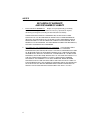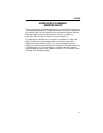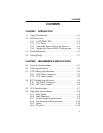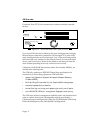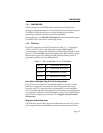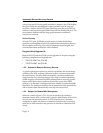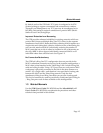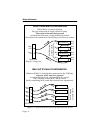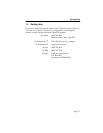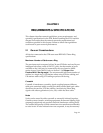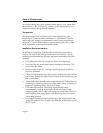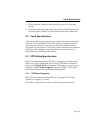
Related Manuals
Page 1-5
By default, each of the STH hub’s TCU ports is configured to its STN
(station) setting to support concentrator lobe connections to stations.
Through Local Management, any TCU port may be reconfigured to its
RO (Ring Out) setting to support connections to passive MAU (Multi-
Station Access Unit) workgroups.
Improved Protection from Beaconing
The STH provides enhanced reliability for existing networks which use
passive MAUs because Multiple Ring Out TCUs allow for the separate
attachment of each MAU. Rather than daisy-chaining MAUs together as a
single entity and risking their collective isolation in case of beaconing, the
user can now attach each MAU individually, reducing the number of
MAU ports that are at risk of collective isolation in case of beaconing on
the ring; ABRP is able to bypass individually connected MAUs on an
individual rather than collective basis. See Figure 1-2.
No Connection Redundancy
The STH hub’s Ring Out TCU configuration does not provide for the
MAU’s redundant connection to the ring. In the common configuration, a
MAU chain is dual-attached to the Token Ring LAN via both a Ring Out
cable and a Ring In cable. Using a TCU port, however, each passive MAU
workgroup is physically connected to the hub in the same manner as a
station—by a single cable—and therefore is not provided a backup path
between the MAU and the Token Ring network. Only the dual
attachment of Ring In
and
Ring Out cables can provide a backup path.
This level of connectivity must be provided by a dedicated pair of Ring In
/ Ring Out ports such as those available on the intelligent hub.
1.3 Related Manuals
Use the
STHi User’s Guide
(PN 9031390) and the
MicroMMAC-xxT
User’s Guide
(PN 9031320) to supplement the procedures and other
technical data provided in this manual.



